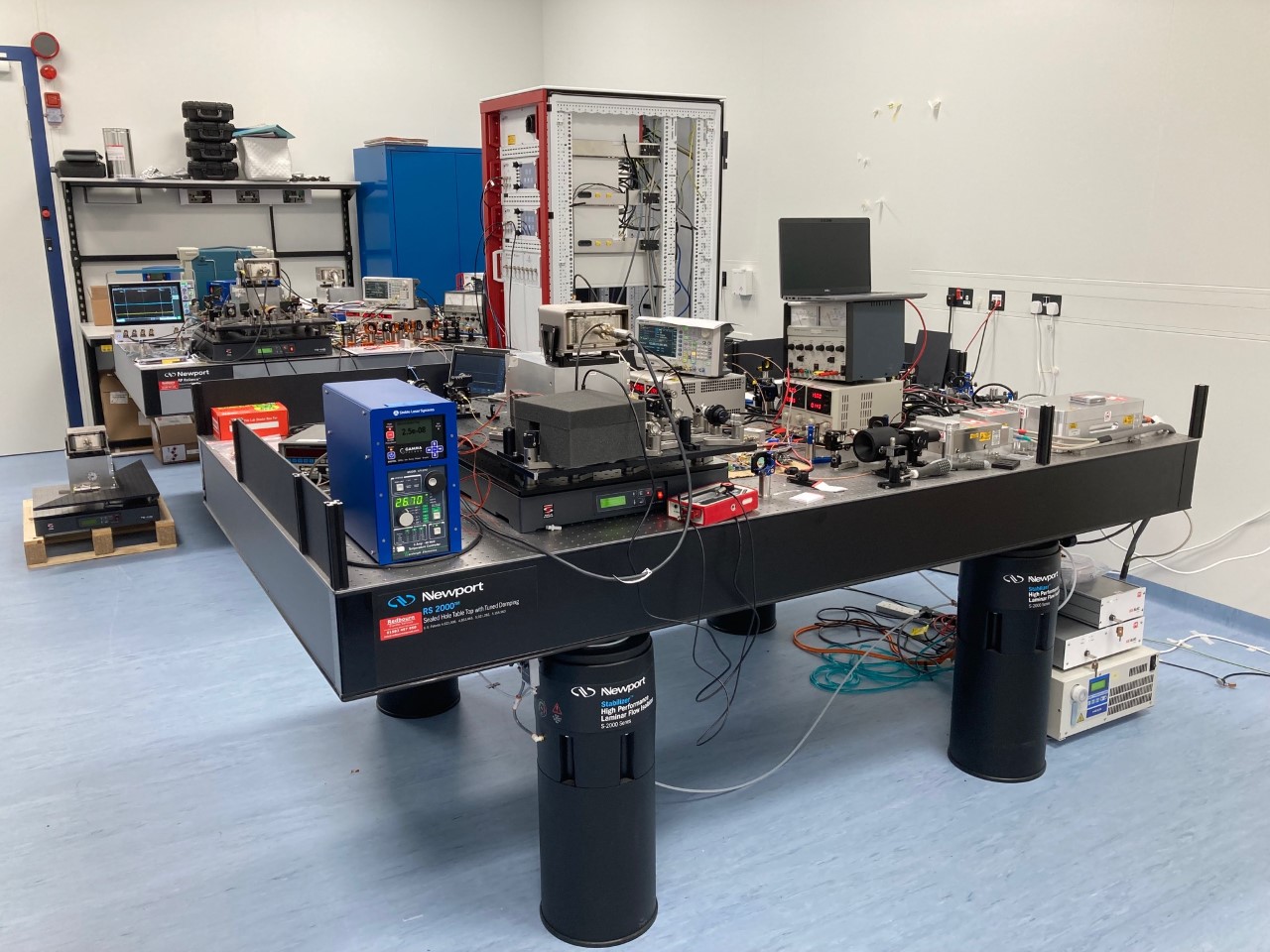There are many unsolved mysteries in the universe – particularly what happened in the very beginning after the Big Bang. Only 5% of the entire universe is made up of normal matter, while the rest is made up entirely of dark matter and dark energy. So, what is dark matter? Nobody knows what dark matter truly is yet, but scientists are exploring everything it could be – including a type of particle. This particle is hypothesised to be exceptionally light in nature and spreads throughout space with a varying density that changes in time, which makes it difficult to look for. In addition to discovering the true nature of dark matter, observing mid-frequency gravitational waves from primordial violent collisions, such as black holes colliding, allows scientists to build a better picture of the early universe. Studying ultra-light dark matter and mid-frequency gravitational waves requires much greater sensitivity than current experiments, and this is where the Atom Interferometer Observatory and Network (AION) Project comes into play.
AION is the first large-scale atom interferometer in the UK that aims to explore ultra-light dark matter and mid-frequency gravitational waves using techniques based on quantum interference effects. These interferometers placed one above the other in a vacuum system, make use of the wave characters of atoms. Strontium atoms are cooled to temperatures close to absolute zero and sent into the main vacuum system tower. These atoms are then launched vertically and travel many metres before falling back down. During their flight, they interact with a laser pulse that splits them into a superposition of two energy states – excited and unexcited. This creates a superposition of two clouds of atoms. A second laser pulse is then fired at the atoms to exchange the states, followed by a final pulse to recombine and read out the atomic populations. If something interacts with the atoms as they are falling, such as dark matter or gravitational waves, a change will be seen in the final signal observed. With the expertise of scientists from all over the world, AION will use a network of these atom interferometers to extend the power of measurements through joint observations.

A simple illustration of the path of atoms in the atom interferometer
The AION collaboration chose to work with strontium atoms as they have a narrow optical transition— a transition where the atom changes energy state. Atoms, such as strontium, only interact with specific wavelengths of light and this narrow transition, in particular, can be used to make very accurate atomic clocks. For atom interferometry, this narrow transition can be used for precise measurement over the large distances that AION plans to use. However, working with strontium comes with its challenges; cooling these atoms to extremely low temperatures requires complex laser frequency stabilisation techniques.
Recently, the Strontium Lab was established for the AION project to be built in RAL Space at the Rutherford Appleton Laboratory after being awarded the STFC capital grant. With the collective collaboration of scientists from the Particle Physics Department, Technology Department, and RAL Space across Rutherford Appleton Laboratory and Daresbury Laboratory, the Sr-lab aims to develop world-class expertise in using strontium in experiments, train new researchers, stabilise laser frequencies and collaborate in the design of the current and future AION detectors with the Technology Department. Once AION is successful at the 10-metre scale, AION aims to scale the project up to 100m, 1km, and potentially in space.

One of the optical tables in the new Strontium-Lab at Rutherford Appleton Laboratory
Cavity used for frequency stabilisation
“We’re excited to see how improvements in cold atom technology translate into advances in fundamental physics.,”
says Mark Bason, a quantum researcher at RAL Space involved in setting up the Sr-lab.
The Sr-lab aims to have cold atoms in the summer of 2022 and progressively develop further cooling and trapping techniques later in 2022, and then perform the final interferometry in 2023.
